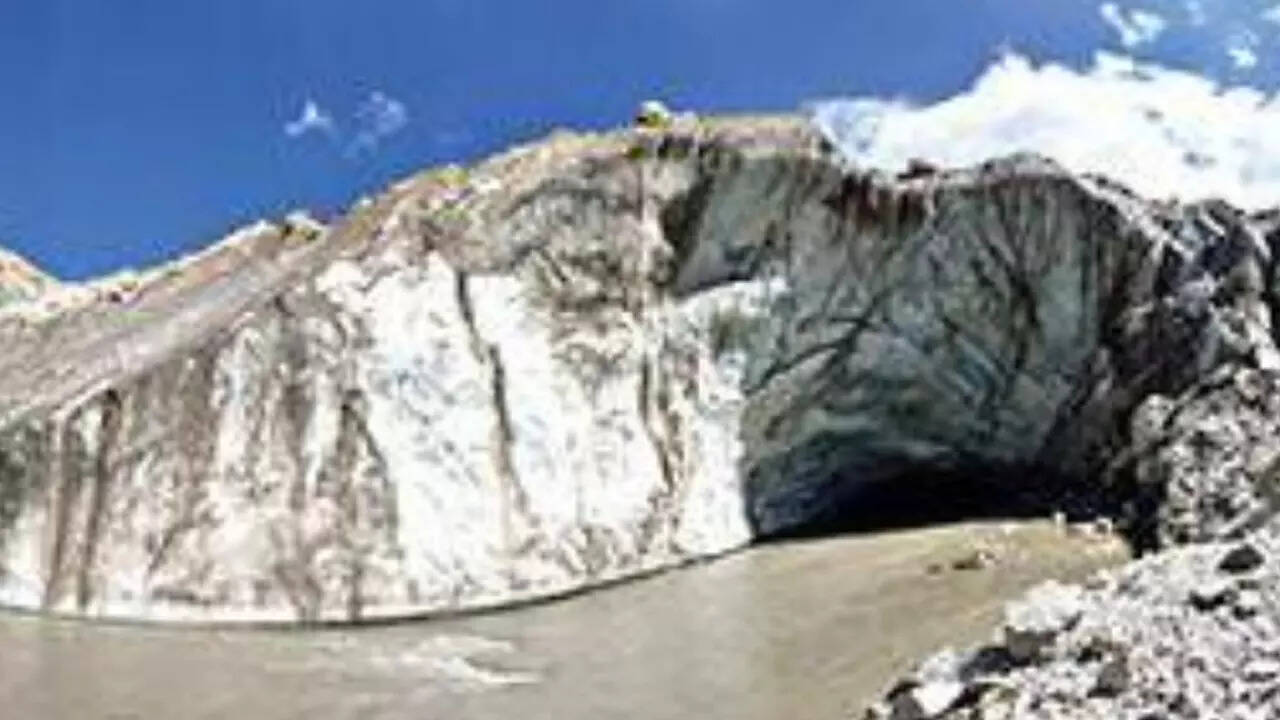
DEHRADUN: Over 50,000 different types of bacteria found in the deglaciated area of the Gangotri glacier, 92% of which are "unknown" to mankind, have been turning it from white to green, discovered scientists at the Wildlife Institute of India (WII) in a first-of-its-kind study of the Indian side of the Himalayas.
It was published in America's 'Current Microbiology' journal this month. The research, which studies a time period of over 300 years, shows the relationship between "deglaciated landscapes, bacterial community succession, flora, and climate change", scientists said.
'Bacteria transforming landscape indicative of climate change'
Using next-generation DNA barcoding techniques, scientists found 48,454 types of bacteria that were "unknown", with no mention in the world database maintained by the US-based National Centre for Biotechnology Information (NCBI). The research found 53,129 types of bacteria overall. Researchers said these bacteria diversified over a period of 300 years and helped in "stabilising the soil of the deglaciated valley, resulting in its greening".
Speaking about the findings, co-author of the study and former dean of WII, Dr GS Rawat, told TOI, "This is a landmark study. We have come up with baseline findings and these underline the need for further establishing the relationship of bacteria with deglaciated land and plants in the Indian Himalayan region. It is the first study of the deglaciated landscape of the Indian Himalayas. Bacteria play an important role in soil chemistry and soil physiology. Some act as nutrition providers for plants so they help in their growth."
Surprisingly, the mycobacterium genus that causes tuberculosis and leprosy in human beings "dominates" the deglaciated landscape. However, whether the newly found unidentified species of the mycobacterium genus are pathogenic or not is yet to be ascertained by scientists. The researchers studied three sites along a terminal moraine (a mass of rocks and sediment carried down and deposited by a glacier at its furthest advance) representing the past 20-year, intermediate 100-year, and the late 300-year deglaciated periods to understand the evolution of bacteria and plants in that landscape.
Researchers of the study, Pamela Bhattacharya and Pankaj Tiwari, developed its concept and said, "Bacterial species are well equipped to invade and transform the barren deglaciated lands into a functionally diverse ecosystem, which may provide feedback for climate change."
The study states that the Himalayan region represents the highest mountain range globally and it has warmed significantly in recent years. Almost 17% of the Himalayan landscape is glaciated, of which 21% of glaciers have retreated over the past 50 years as per researchers. The Gangotri glacier is the largest in the Himalayas, having a total ice cover of 200 square km. This glacier is the primary source of the river Ganga, on which 42% of the Indian population has been dependent.







